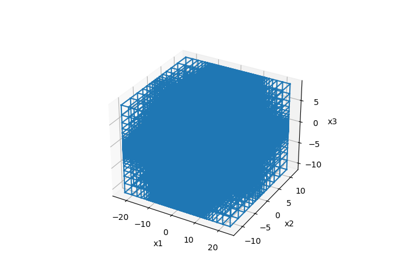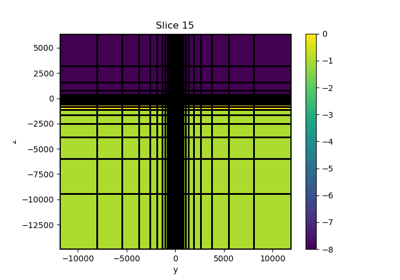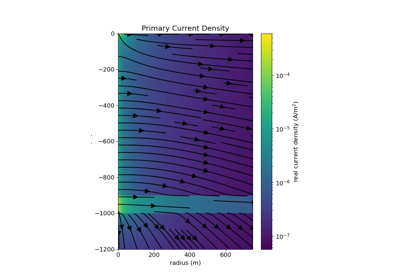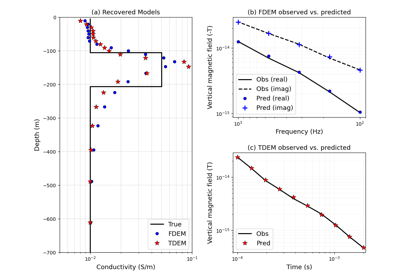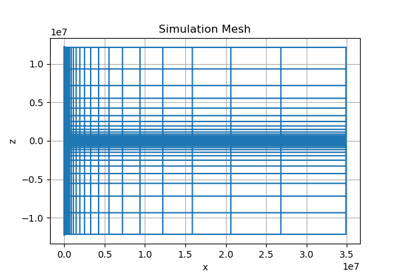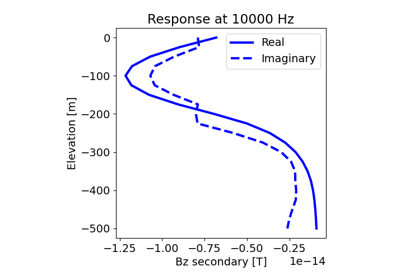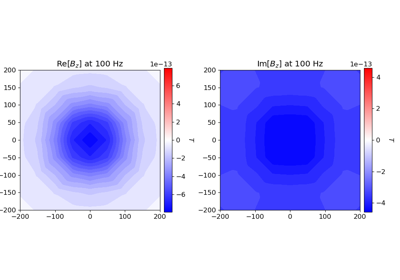SimPEG.electromagnetics.frequency_domain.simulation.BaseFDEMSimulation#
- class SimPEG.electromagnetics.frequency_domain.simulation.BaseFDEMSimulation(mesh, survey=None, forward_only=False, **kwargs)[source]#
Bases:
SimPEG.electromagnetics.base.BaseEMSimulationWe start by looking at Maxwell’s equations in the electric field (\(\mathbf{e}\)) and the magnetic flux density (\(\mathbf{b}\))
\[\mathbf{C} \mathbf{e} + i \omega \mathbf{b} = \mathbf{s_m} {\mathbf{C}^{\top} \mathbf{M_{\mu^{-1}}^f} \mathbf{b} - \mathbf{M_{\sigma}^e} \mathbf{e} = \mathbf{s_e}}\]if using the E-B formulation (
Simulation3DElectricFieldorSimulation3DMagneticFluxDensity). Note that in this case, \(\mathbf{s_e}\) is an integrated quantity.If we write Maxwell’s equations in terms of \(\mathbf{h}\) and current density \(\mathbf{j}\).
\[\mathbf{C}^{\top} \mathbf{M_{\rho}^f} \mathbf{j} + i \omega \mathbf{M_{\mu}^e} \mathbf{h} = \mathbf{s_m} \mathbf{C} \mathbf{h} - \mathbf{j} = \mathbf{s_e}\]if using the H-J formulation (
Simulation3DCurrentDensityorSimulation3DMagneticField). Note that here, \(\mathbf{s_m}\) is an integrated quantity.The problem performs the elimination so that we are solving the system for \(mathbf{e}\), \(mathbf{b}\), \(mathbf{j}\) or \(mathbf{h}\).
Attributes
If True, A-inverse not stored at each frequency in forward simulation.
The simulations survey.
Methods
Jtvec(m, v[, f])Sensitivity transpose times a vector
Jvec(m, v[, f])Sensitivity times a vector.
fields([m])Solve the forward problem for the fields.
fieldsPairalias of
SimPEG.electromagnetics.frequency_domain.fields.FieldsFDEMgetSourceTerm(freq)Evaluates the sources for a given frequency and puts them in matrix form
Galleries and Tutorials using SimPEG.electromagnetics.frequency_domain.simulation.BaseFDEMSimulation#
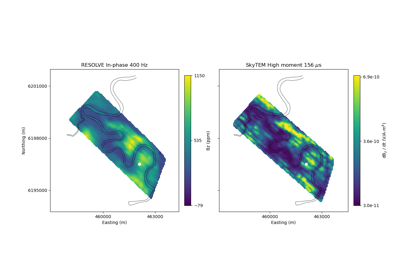
Heagy et al., 2017 1D RESOLVE and SkyTEM Bookpurnong Inversions
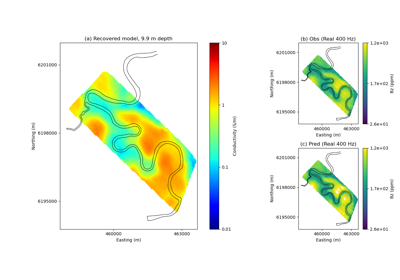
Heagy et al., 2017 1D RESOLVE Bookpurnong Inversion
